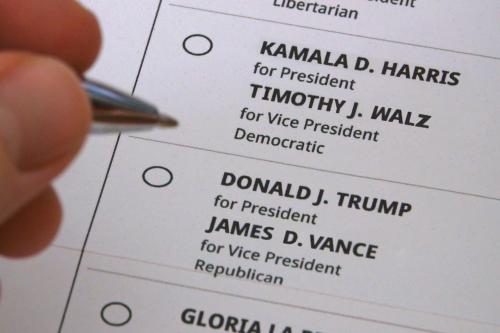Editor’s Note: The following commentary originally appeared on the Financial Times website, and is based on data by the authors presented in the Financial Times’ China Currency Tracker interactive feature.
View the China Currency Tracker at ft.com » (subscription required)
The renminbi is in the spotlight again. The U.S. Presidential election campaign features both candidates vowing to be tough on China, with Mitt Romney promising to “call China a currency manipulator on day one” if elected. In fact, based on data for this year, there isn’t a strong basis for a charge of currency manipulation. Meanwhile, with growth slowing and the leadership transition taking many unexpected twists, there are concerns about capital flight from China that could also have implications for the renminbi. While capital inflows have fallen and outflows have increased, there is little evidence of massive capital flight that could destabilize the economy.
During 2012, the renminbi has continued on its path of gradual appreciation relative to the U.S. dollar. Since end-2011, the renminbi has appreciated by 1.2 percent against the dollar. But it has not been a slow and steady one-way march. The renminbi in fact depreciated modestly by about 0.7 percent over the summer. Since the end of July, the currency has resumed its appreciation and risen in value by 2 percent against the dollar.
One reason for these fluctuations is that China, like many other emerging market economies, has experienced significant swings in its net capital flows during 2012. This has led to two-way movements in the currency. The People’s Bank of China has accommodated these fluctuations and appears to be increasingly comfortable allowing the currency’s value to be determined by market forces. Nevertheless, it still keeps a tight lid on day-to-day volatility in the currency.
Interestingly, in inflation-adjusted terms, the renminbi’s value relative to the dollar is now almost exactly where it was at the beginning of this year. During 2012, inflation in the U.S. has been higher than in China, with the differential offsetting the nominal appreciation of the renminbi.
Since the value of the euro relative to the dollar is now almost exactly at the same level as at the end of 2012, the year-to-date nominal appreciation of the renminbi relative to the euro is also 1.2 percent.
On a trade-weighted basis, the nominal effective exchange rate is barely unchanged from its level at the end of 2011. Given lower inflation in China than in most of its trading partners, the real effective exchange rate has in fact depreciated slightly.
Seen from a broader context, movements in the currency indicate an altered landscape for the currency’s short-term prospects. Based on data for the first three quarters of 2012, the current account surplus is likely to remain under 3 percent of GDP while the trade balance could come in at around 2 percent of GDP in 2012. The nondeliverable forwards market is not indicating expectations of renminbi appreciation; in fact, for much of the last year, it has been signaling market anticipation of a slight depreciation.
The level of foreign exchange accumulation, which is one measure of intervention in foreign exchange markets, has been substantially lower since mid-2011 than in preceding years. During the first three quarters of 2012, net accumulation of foreign exchange reserves was just over $100 billion, compared to $330 billion in 2011 and nearly $450 billion per year in the four years preceding that.
In short, recent data make it harder to support the case that foreign exchange market intervention by China’s central bank is perpetuating undervaluation of the renminbi in the short run. Pressures on the renminbi appear to have become more balanced.
Weaker inflows and stronger outflows (including an increase in foreign currency deposits) have led to a more balanced position on the financial account. These swings seem to be quite similar to those experienced by many other emerging markets. While gross capital outflows have increased significantly over the past two years, these are consistent with the government’s steps to liberalize outflows. Non-government outflows are likely to increase further as Chinese corporations look for investment opportunities abroad and as financial market development allows households to take advantage of avenues to diversify their savings into foreign investments
All things considered, there is still a strong case to allow for greater flexibility in China’s exchange rate, which would have many domestic benefits. However, recent data should dispel the notion that what’s needed is a big appreciation of the currency rather than more flexibility. There is also little reason (so far) to panic about China’s rising capital outflows—they may be a sign of a maturing economy rather than a troubled one.



Commentary
Op-edThe New Renminbi Landscape
October 30, 2012